Vadim Zadorozhny Museum - Moscow / Russian Federation
Update: 2021/11/23 by Roman Bagrov/ CHK6
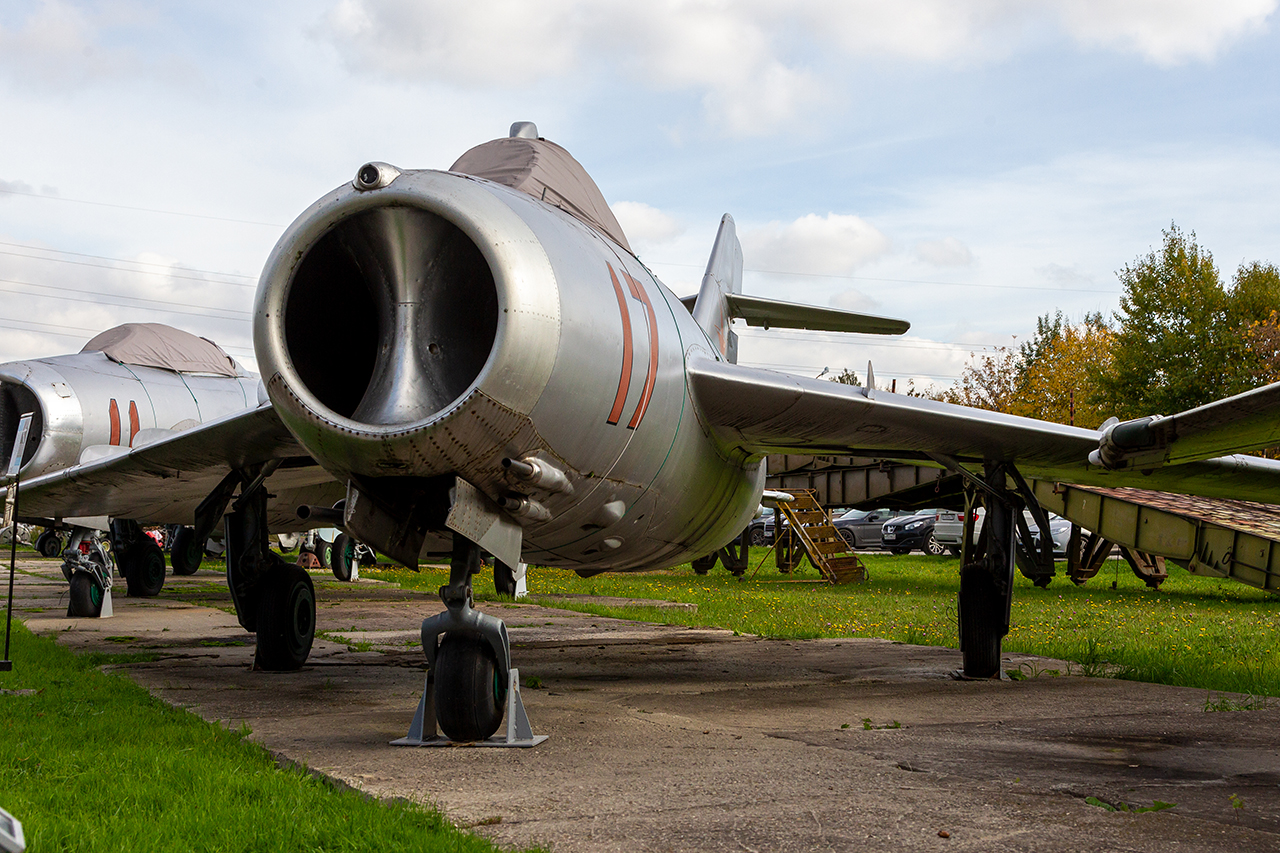
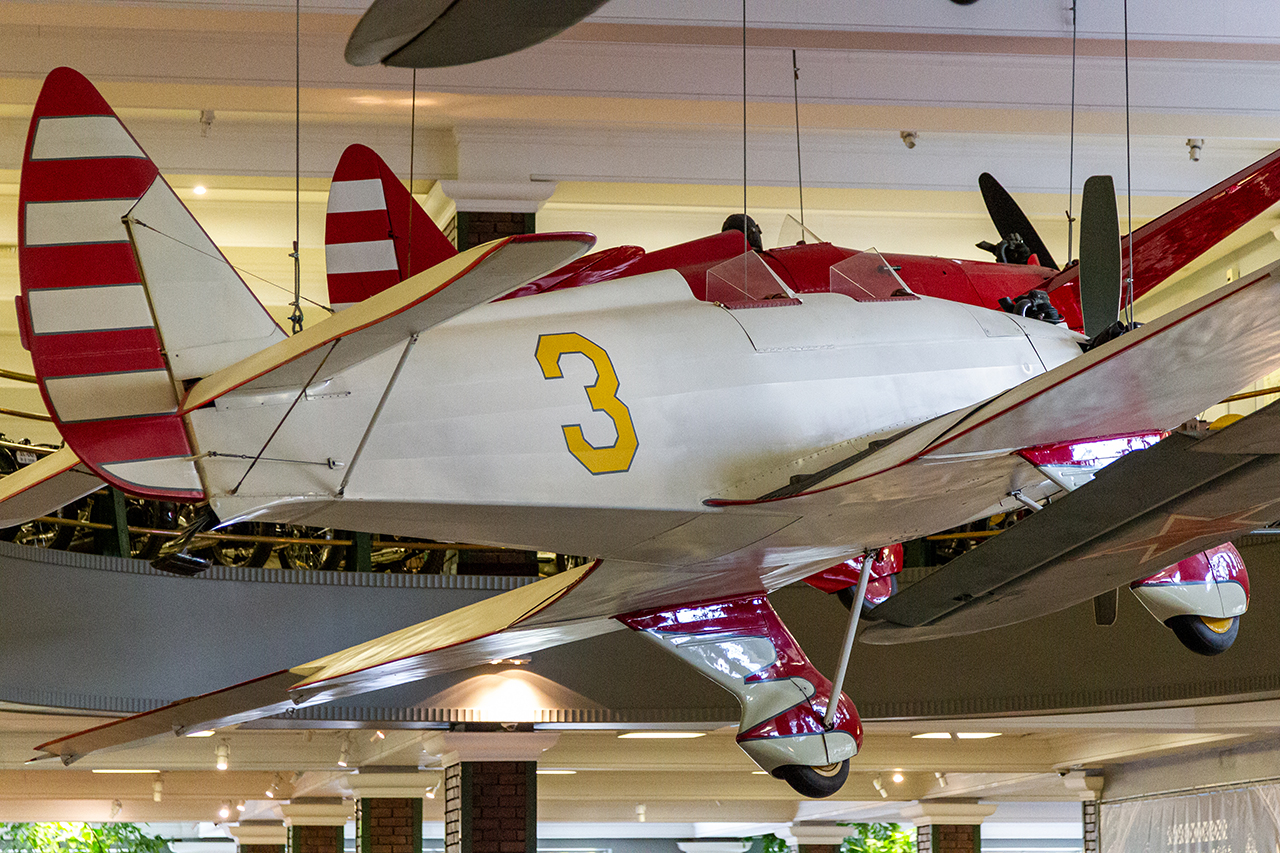
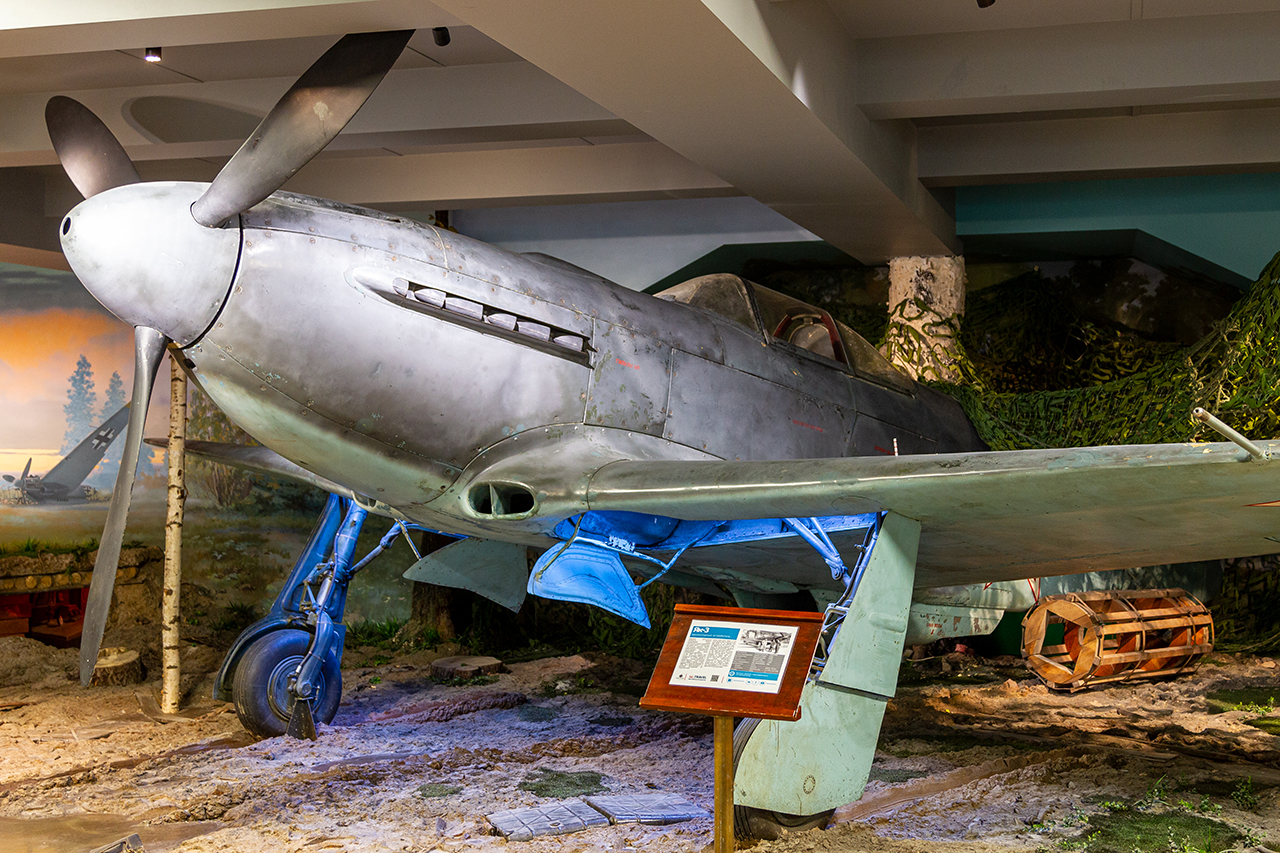
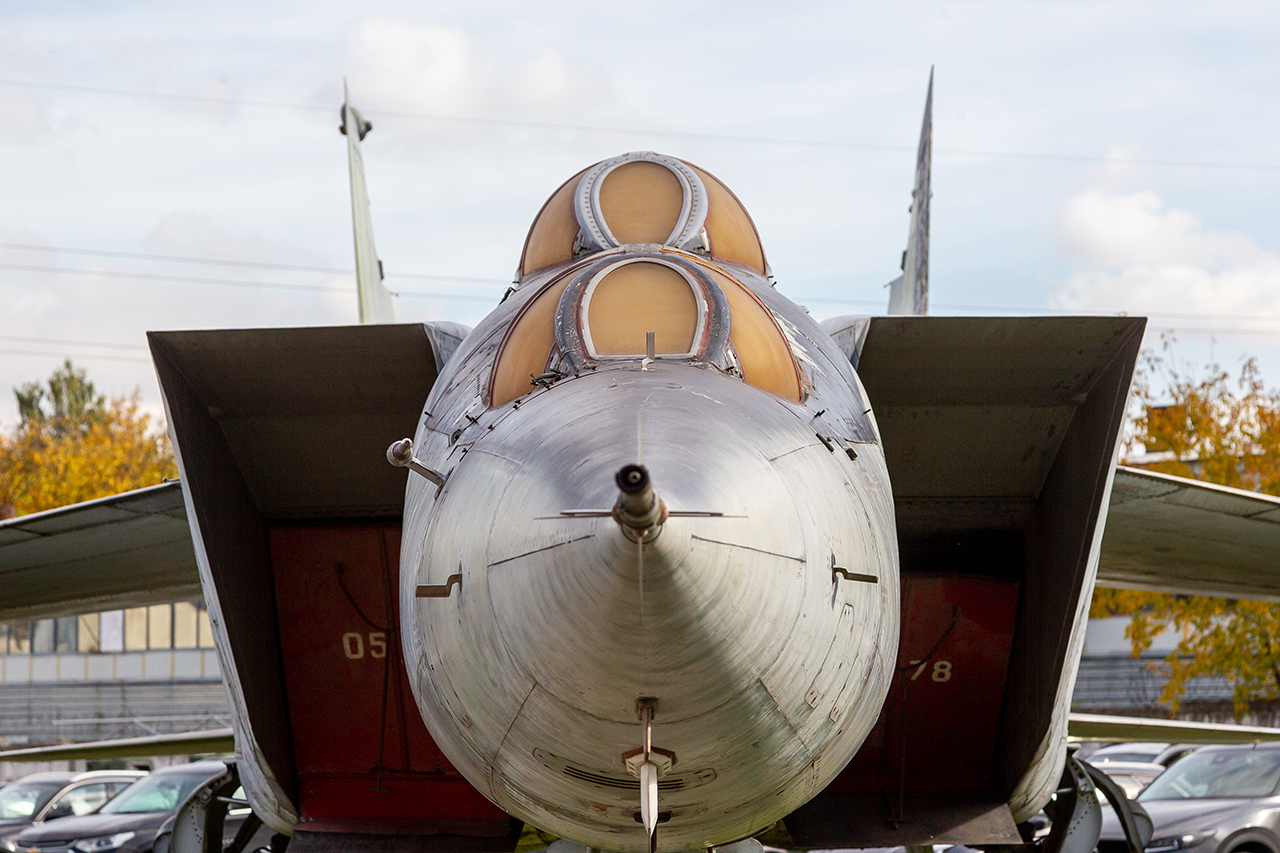
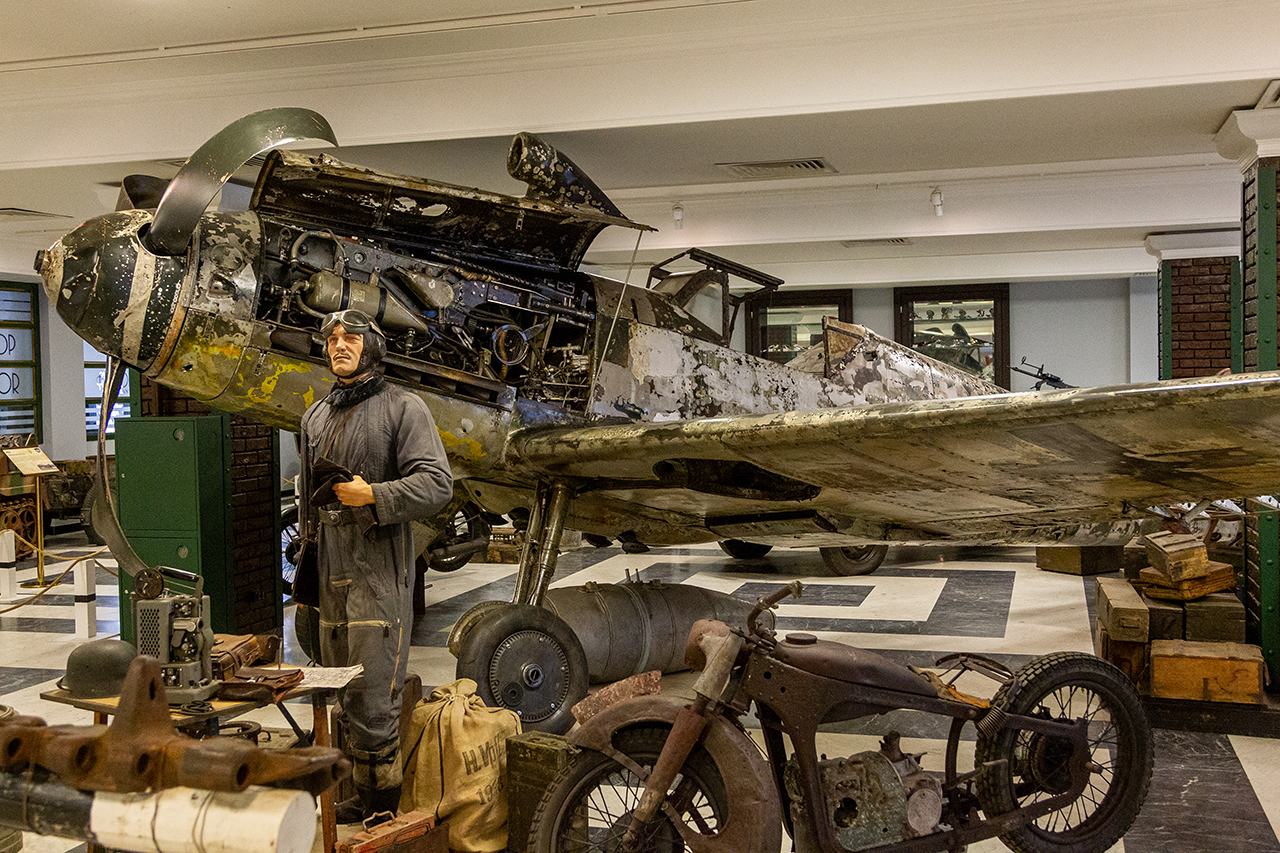
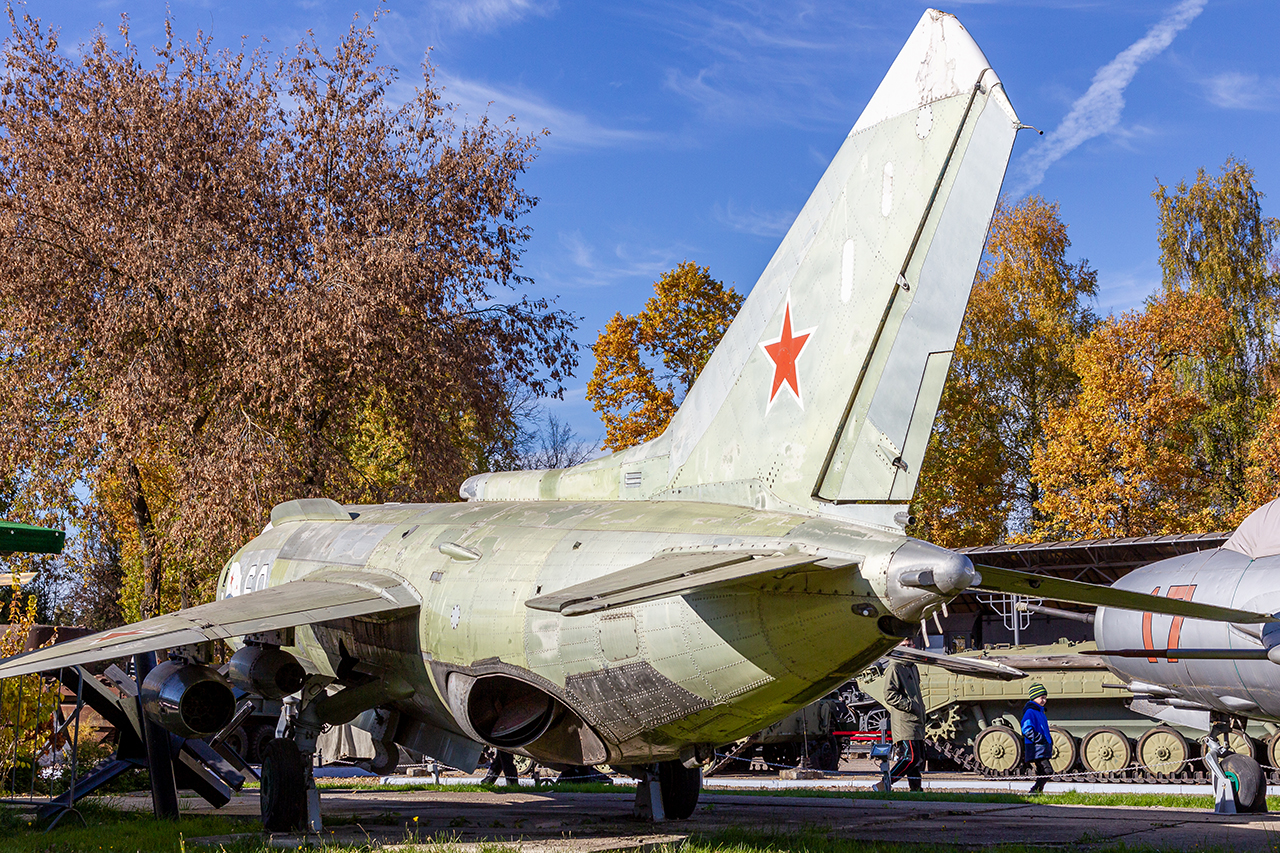
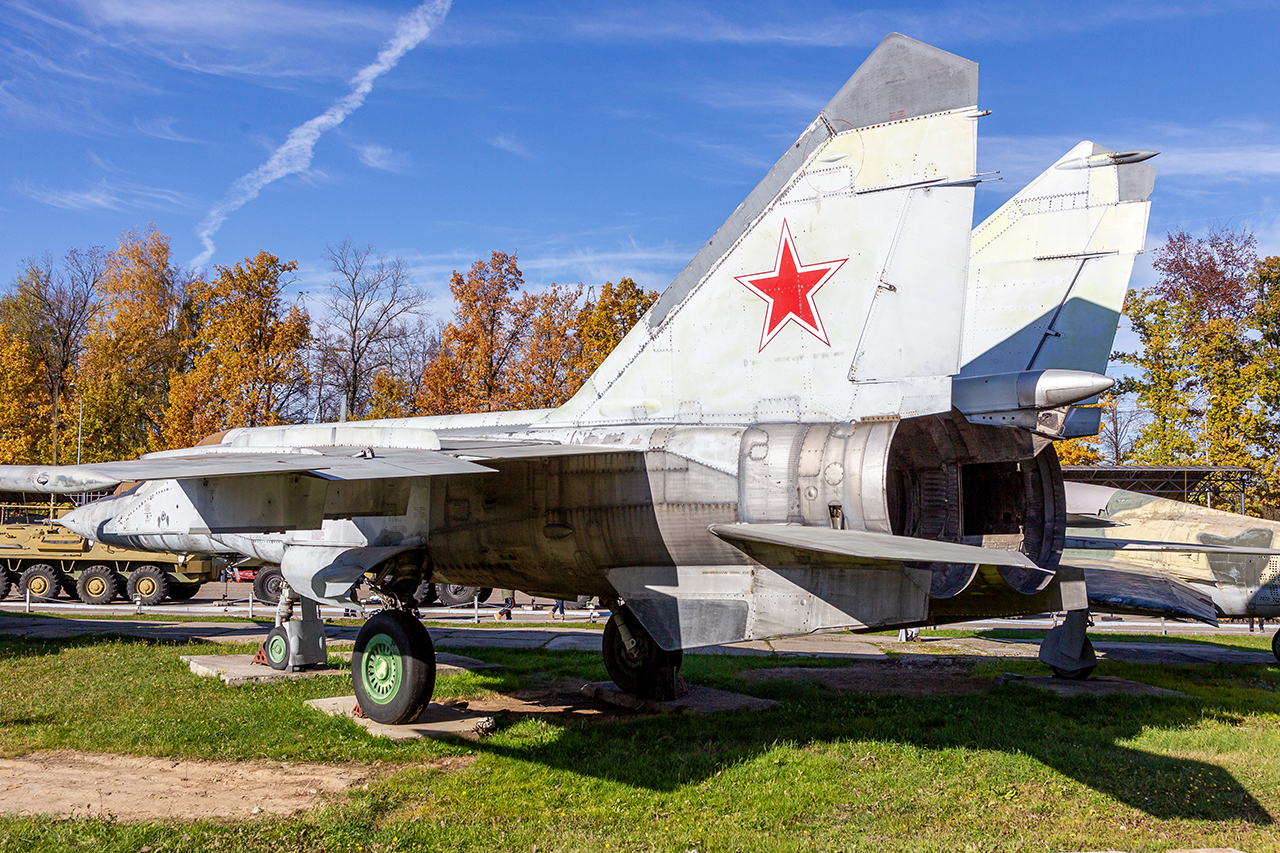
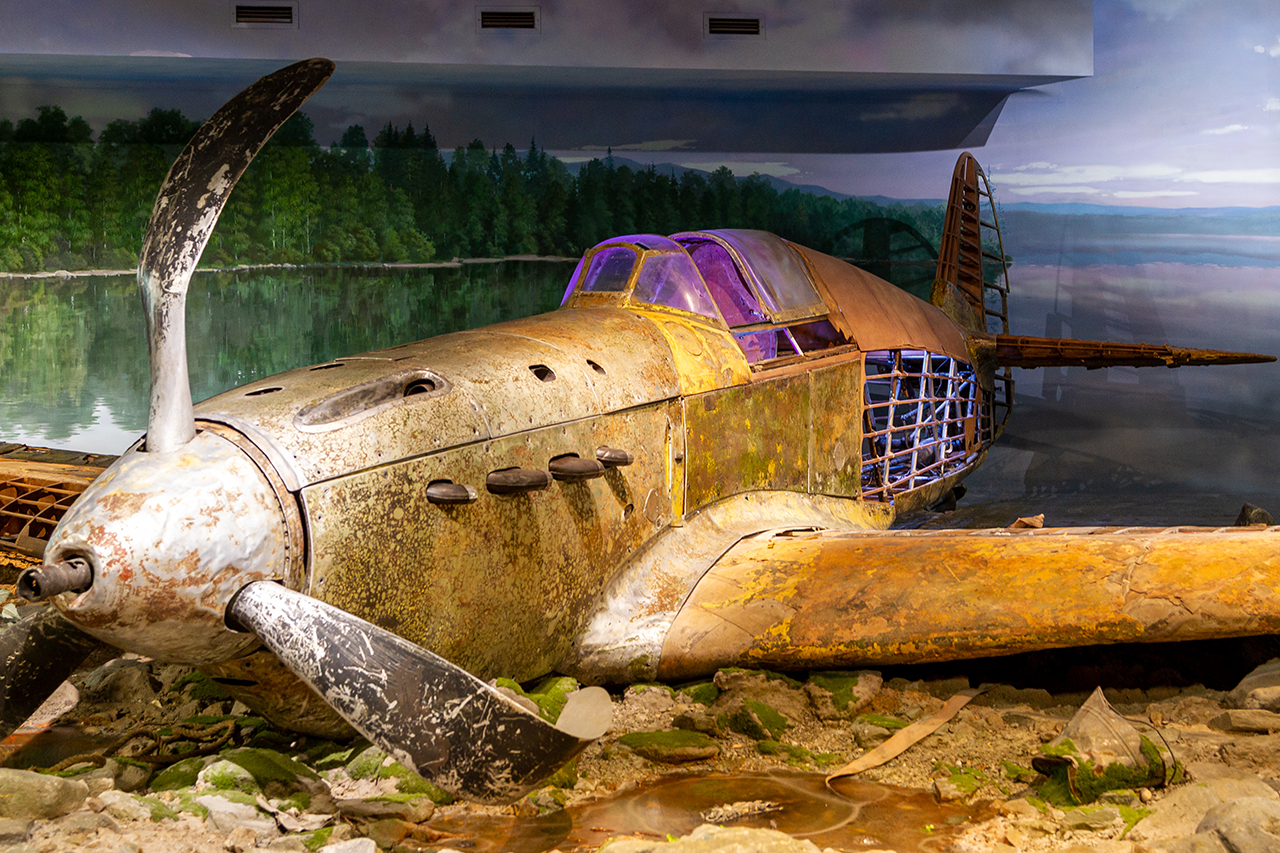
Fully restored this early variant of an Su-24 now holds its place as the central meeting point of the museum
R. Bagrov
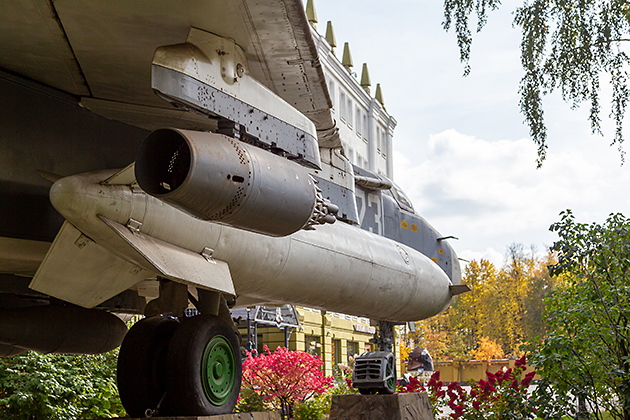
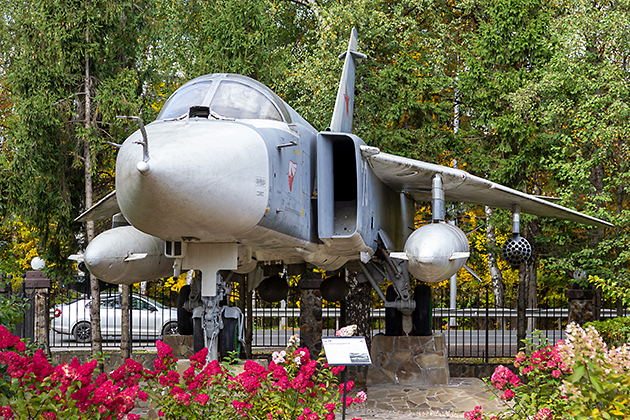
The open-air exhibition starts with a Sukhoi Su-24 (NATO Code: FENCER) which is mounted on posts and which, unfortunately, is tightly surrounded by trees and bushes. This Su-24, code named ’73 White’, served in 1st Krasnogvardeysky Separate Guards Bomber Regiment. It was honored twice with Red flag, carrying medals of Lenin and Kutuzov of 3rd Grade and named after 50 years of USSR establishment. Later passed to a bomber squadron near Rostov the airframe was retired and stored in the backyard of the airfield, totally disassembled for a long period. In 2015, the fuselage, together with the wings and some spares travelled to the museum by truck. Fully restored this early variant of an Su-24 now holds its place as the central meeting point of the museum. This Su-24 carries the common load for long-range missions, 2 x 1500 litre fuel tanks, 2 x FAB-500 bombs and 2 x NAR-UB-32 rocket launchers.
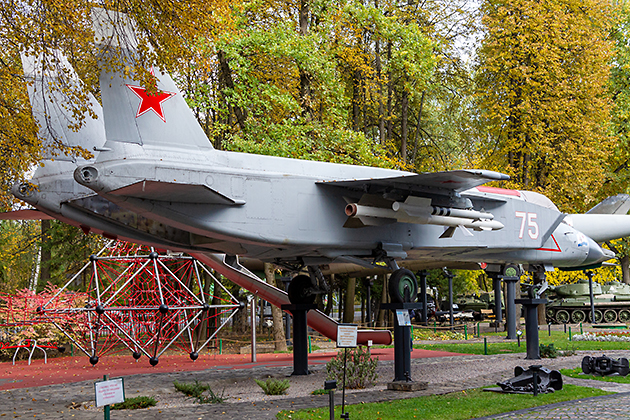
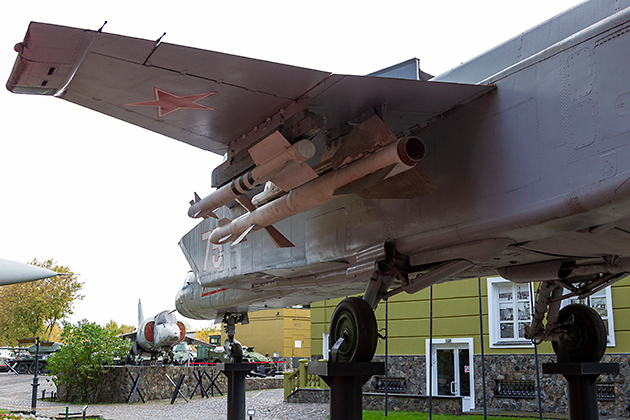
This original Yak-38 is the second serial airframe (serial number 02-01) of this type which was designated as Yak-36M.
R. Bagrov
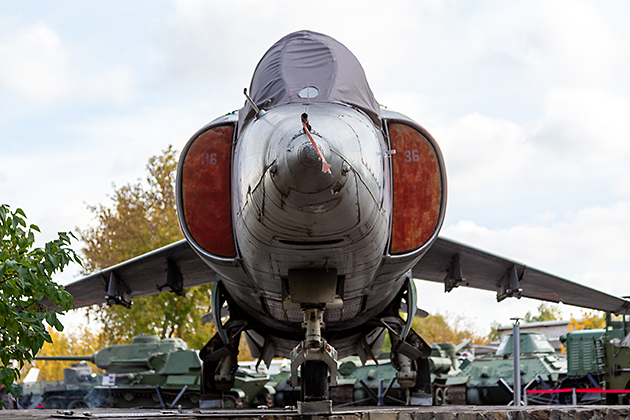
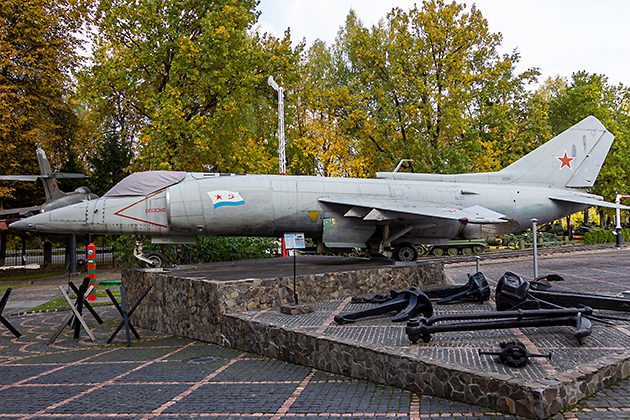
Face-to-face with the successor of the Yak-141 stands the Yakovlev Yak-38 VTOL (NATO code: FORGER). This original Yak-38 is the second serial airframe (serial number 02-01) of this type which was designated as Yak-36M. It performed its maiden flight in 1974 and in the same year this aircraft participated in tests as the first Yak-36M to perform a landing onboard the Kiev aircraft carrier. During these trials it took part in tests for multiple aircraft carrier systems. Further on, it became a part of the Yakovlev design bureau exhibition. In 2006 the Yak-38 was moved to the museum storage area where it was fully restored and painted by the museum team. The Yak-38 carries a full cockpit as well as the engine, so it is the only existing aircraft of this type which still has the complete original equipment installed. Spare engines are carefully stored at the museum facility.
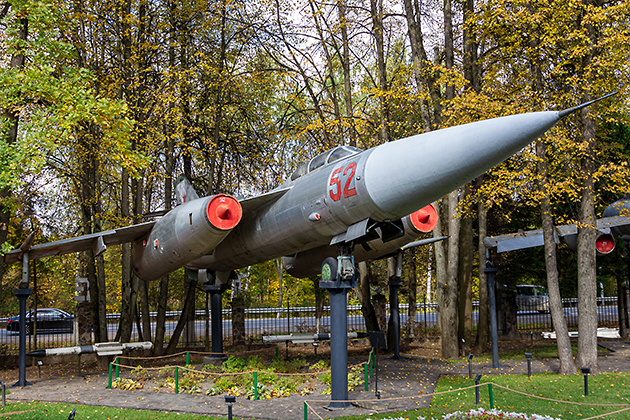
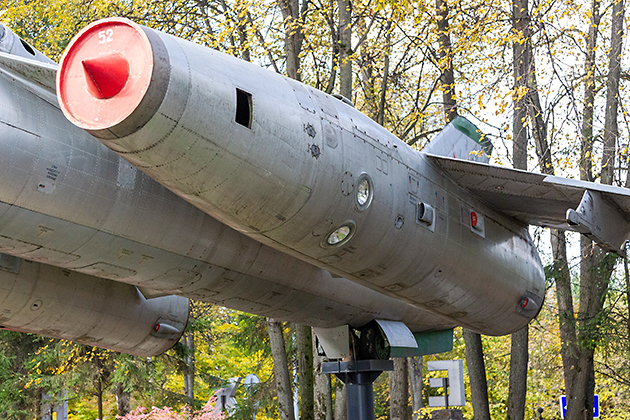
Carrying its initial ’22 White’ registration, this aircraft was intended for the BURAN space module tests, especially in landing sequence in atmosphere and crew training.
R. Bagrov
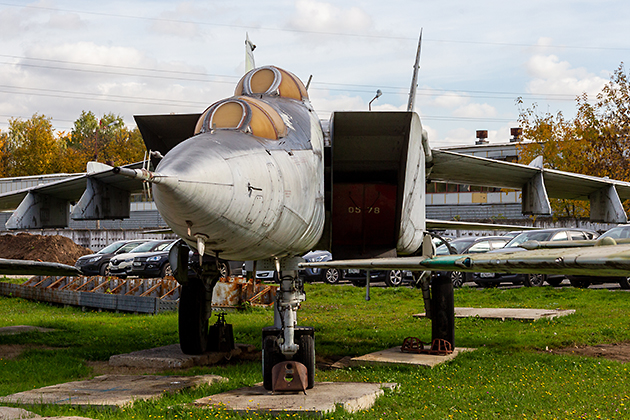
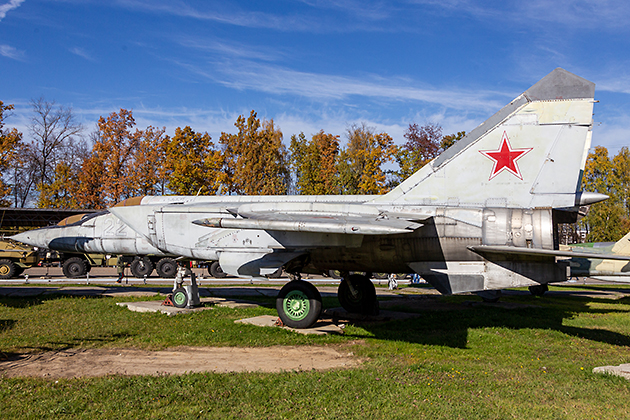
Taking a walk along the alley of aircrafts and passing many Yaks and MiGs you can see a very special aircraft: a Mikoyan-Gurevich MiG-25PU. However, it is not an ordinary MiG-25PU as this is a special version, the so called MiG-25PU-SOTN, the only one remaining of four modified MiGs of this type. Carrying its initial ’22 White’ registration, this aircraft was intended for the BURAN space module tests, especially in landing sequence in atmosphere and crew training. Equipped with high-resolution cameras onboard, tests consisted of special procedures on descent and approach including an engines idle glide slope beyond minimums with no acquisition until touchdown. Considering that the MiG-25 is not an easy aircraft to control on final, this special version was minimally weighted and its landing speed decreased due to several modifications. This MiG-25 was the first to meet BURAN during landing in Baikonur, returning from its first space mission. Piloted by Magomet Tolboev, Mikoyan design bureau chief pilot and operator M. Zhadovsky, this aircraft captured unique images of BURAN`s landing procedure, which is now well known around the world.
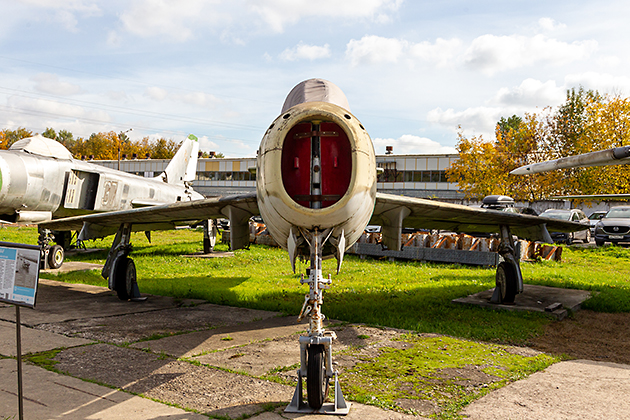
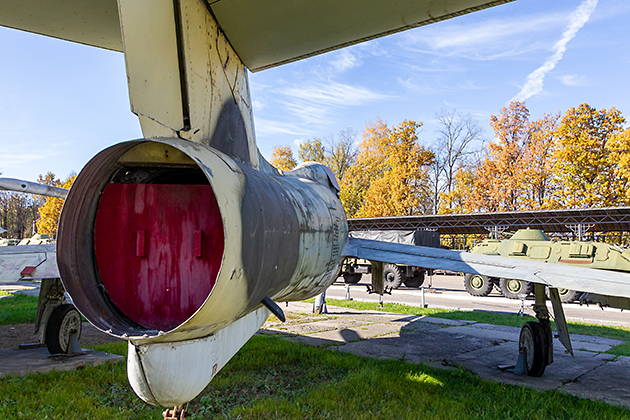
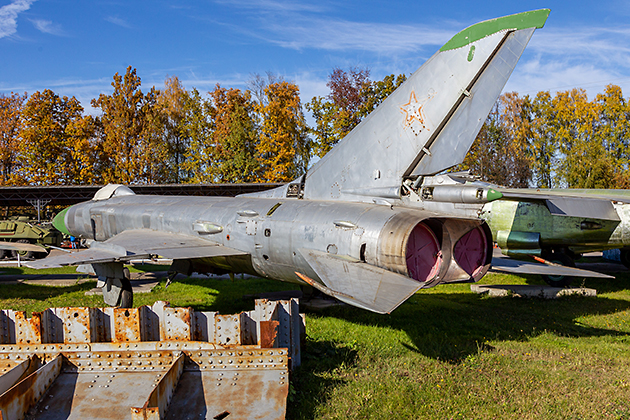
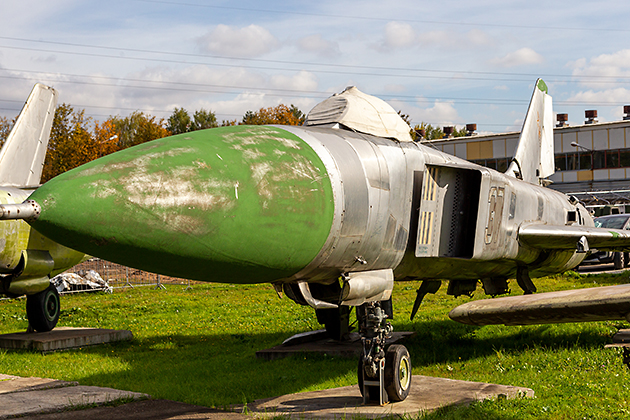
Dimmed lights, exhibits filled with characters, mannequins and a great reproduction of field and war lifetime moments
R. Bagrov
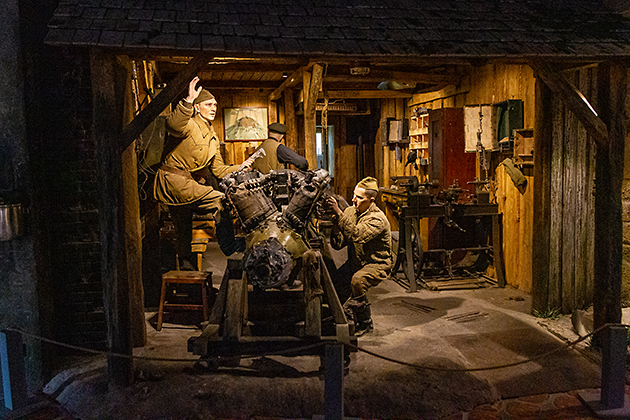
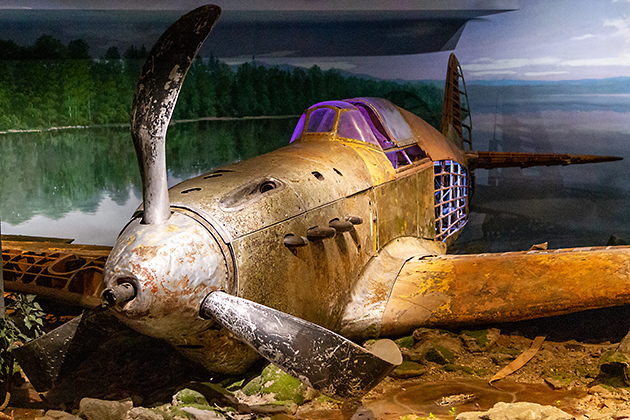
Now, let us move to the treasure of this museum, the Great Patriotic War hall. Dimmed lights, exhibits filled with characters, mannequins and a great reproduction of field and war lifetime moments. All that looks like a big diorama with 1:1 scale aircraft.
The first one we can see is a Yakovlev Yak-1 showing its distinctive body frame construction. Specially removed fuselage panels allow visitors to see the construction of the wings and fuselage on this type of aircraft. Fully made of wood and covered with aluminum and percale panels the Yak-1 was able to resist the newest Luftwaffe fighters during the first years of the war. Specifically, this Yak-1 was being piloted by Lieutenant Demidov and was returning home to Vaenga-2 airfield near Murmansk after a convoy mission. It was his 4th mission of the day, and the aircraft suddenly lost control during landing and he had to perform a go around procedure. Due to low fuel, the pilot decided to land the aircraft on a nearby frozen lake. The aircraft crashed but happily, the pilot was rescued. The search for this airframe took more than 10 years. Demidov helped the team of the museum in this special search-and-rescue mission and finally after 68 years of being submerged in the lake, this Yak-1 has been lifted from the lakebed and moved to the museum.
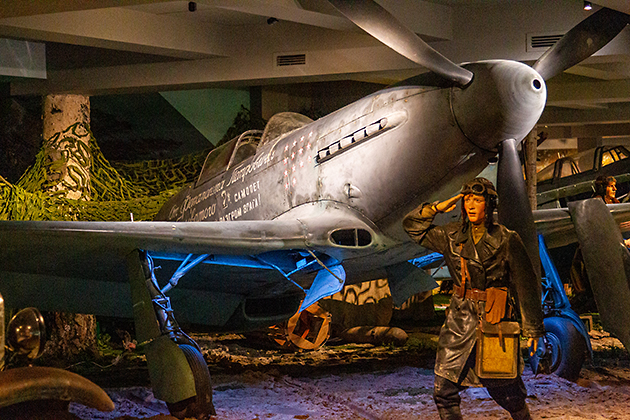
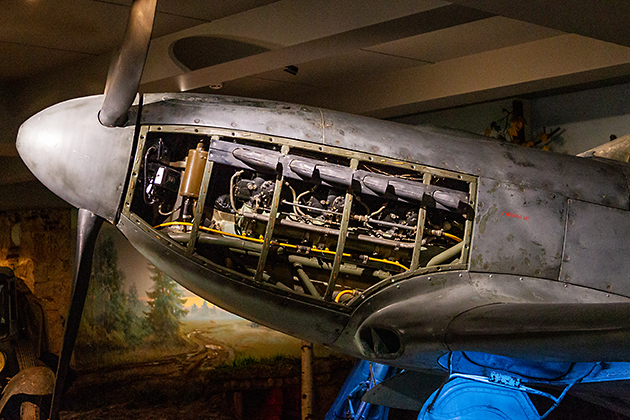
The second exhibit transports visitors back to late October 1943, after a heavy autumn rainfall turned the ground to mud. A Yakovlev Yak-3 has just landed and is being prepared for another raid, the pilot briefing the officer about his mission. Reporting ready to go and with no time to waist, the pilot departs again. Will he come back?
This Yak-3 is the one and only remained airframe with engine and cockpit equipment carrying all original parts throughout its structure and ready for flight. Feropont Golovaty, born in Saratov region, was working as a farmer and beekeeper in 1941 at the bee yard. Having a large family of 2 sons and 4 daughters, Feropont decided to help a Soviet neighbor pilot from Saratov and buy him a new fighter Yak-1. He arrived to Saratov city centre market with honey, which was very valuable at the time. Following memories from the Feropont family: “we always suffered food shortage, sometimes bread was our only food. Asking our father to keep money for his grandsons, his only answer was “will beat the fascists, will have and keep all”. In 1941 Feropont entered the director`s aircraft plant office with a sack of money and asked to buy a new Yak-1. Stalin received this request and his resolution was: “receive all money, provide to USSR air force new Yak-1 from plant with the name “from Feropont Golovaty to the USSR front, to defeat the enemies”. In 1943, Major Boris Yeremin, also born in Sarartov region, received and piloted this Yak-1. He scored 7 aerial victories with missions from Stalingrad to Crimea, but in 1944 his aircraft was written off and taken out of service. Yeremin sent a gratitude letter to Feropont for his donation saying: “Thank you for a good battle friend, but now I have to leave it”. In 1944, Feropont lost his elder son and 2 sons-in-law during a massive Soviet advance towards Berlin and started to collect money for the second fighter for the USSR front, a Yakovlev Yak-3. All documents were already prepared and Yeremin took place in this Yak-3, piloting it until V-Day with the same donation writing “from Feropont Petrovich Golovaty, 2nd aircraft to defeat the enemy”. Carefully preserved, this aircraft shows its beauty to all museum visitors.
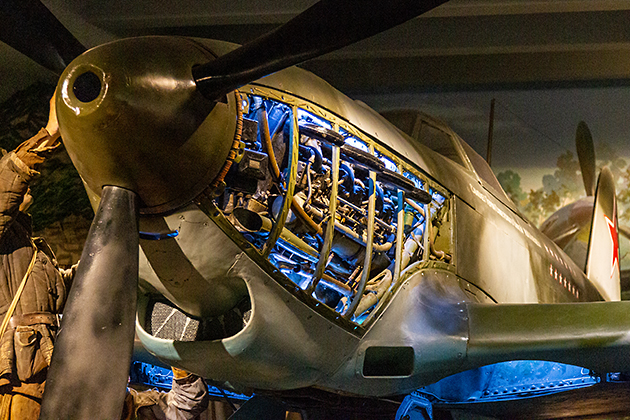
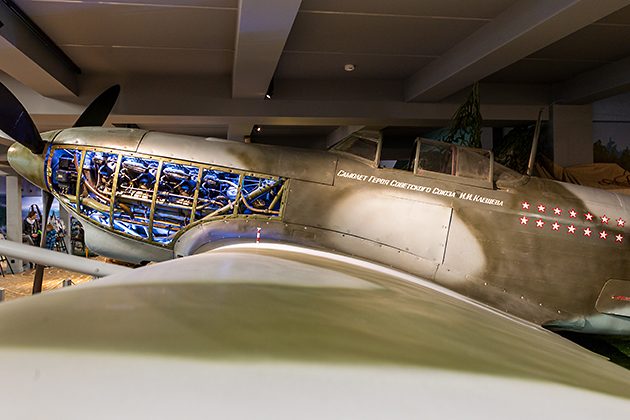
This specific airframe being Hawker Hurricane Mk.IIb, one of the first Hurricanes that ever served on Soviet territory
R. Bagrov
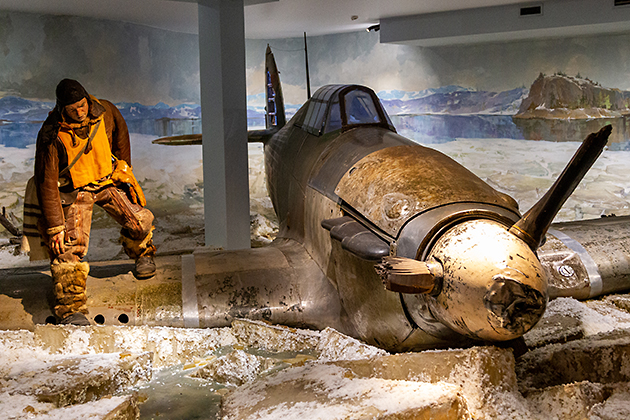
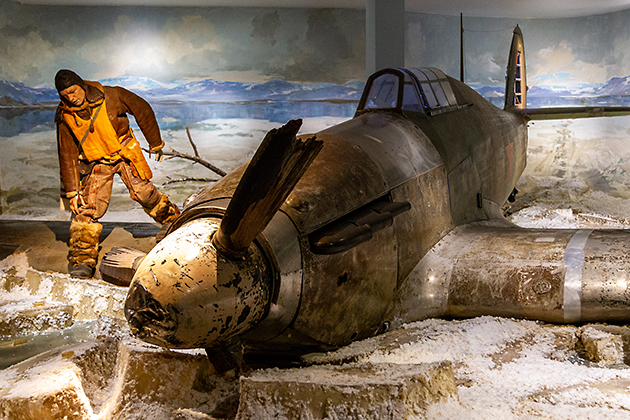
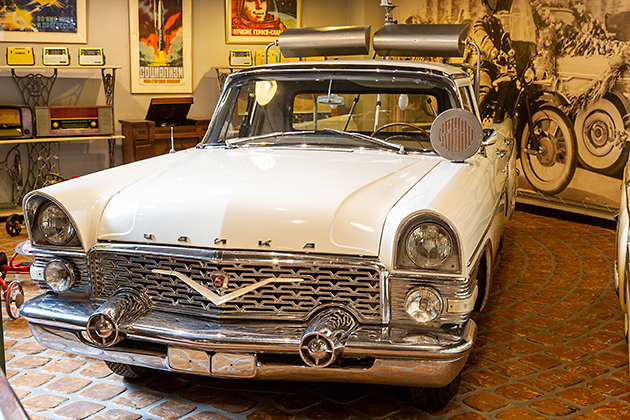
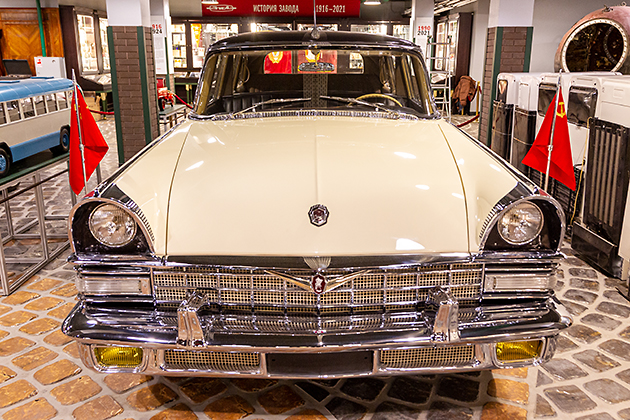
The building of the main exposition has three floors packed with rarities. The basement is dedicated to cars from the Soviet era, like the CHAIKA GAZ-13 (in different variants), several GAZ-20 Pobeda, Zaporozhets models, Moskvich and of course the famous ZIL limousines. It also shows the Soviet life in the form of household articles including appliance electronics starting from the 1920`s. On the ground floor are gathered forgotten labels of cars like Packard, an almost full line of Horch cars, 1930-1940 Maybach exclusives, Mercedes Benz limos, BMW, Alfa Romeo racing cars, Delahaye, Buicks and many other models well mixed with some rare aircrafts exhibits. Hanging from the floor is a Yakovlev Yak-18 trainer. Designed in 1951, this Yak-18 was stored in the Yakovlev design bureau and later moved to Monino before finally finding a home in this fantastic museum. It was a main trainer for the Soviet air force and civil pilots as a first aircraft during the post war period. The Yak-18 was built in quantity with around 4830 airframes produced and it had a good reputation among pilots.
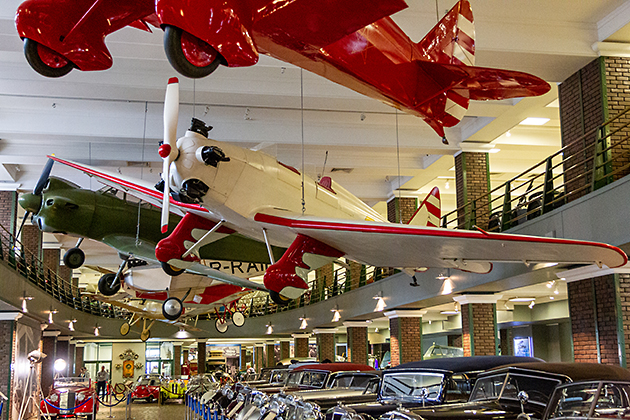
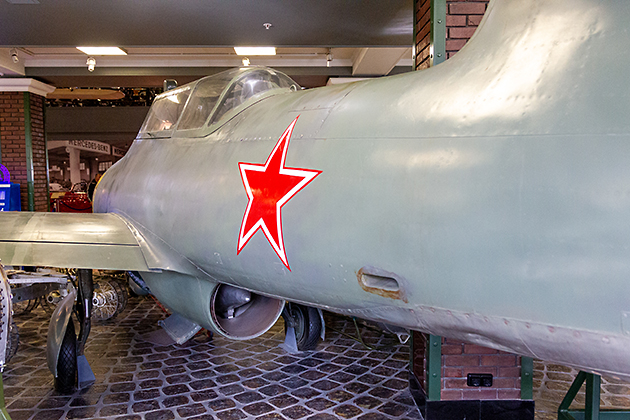
Next is a UT-1 trainer, also known as AIR-14 of Yakovlev design. During the war, around 50 aircrafts were modified to carry 2 machine guns and underwing racks for 4 lightweight bombs. This attack version of UT-1 mainly was used on the southern part of the Soviet-German front lines. This is the only remaining airframe in the world, which originally was used in 1941 as a test aircraft for the machine gun installation carrying its distinctive all red color scheme with white tail tip stripes.
Passing the rows of old-time cars, you meet a Yakovlev Yak-23UTI (NATO code: FLORA). As is common with many aircraft at this museum, it is the only remaining Yak-23UTI with its original cockpit equipment and engine. Having about 50% of flight life remain, this YAK-23 ’01 Yellow’ can be removed from storage and restored for flight. The maiden flight of the twin-seater was performed in 1949 by S. Anokhin, the test pilot of Yakovlev design bureau. This particular Yak-23 is the first two-seater prototype with a modified cockpit that was later to be used as YAK-23-2. In 1993, this aircraft took part as a static exhibit at Khodinka airfield. What was unique on the Yak-23UTI is the fact that it was the first aircraft which was equipped with ejection seats made by the Yakovlev team for both crew members. In addition, the cockpit had separate controls, with two-thirds of the front pilot canopy opening to the left side, while the backseaters canopy slid backwards. Built for the Soviet air force in a quantity of only 313 pieces, this trainer was not popular among flight crews, but after passing documentation to Romania, Poland, Bulgaria, Czechoslovakia this type gained its place and was used for a long period as a main jet trainer for their air forces and now can be seen at many museums in these counties.
Suddenly you are stopped by a barrier with writing “HALT” in German.
R. Bagrov
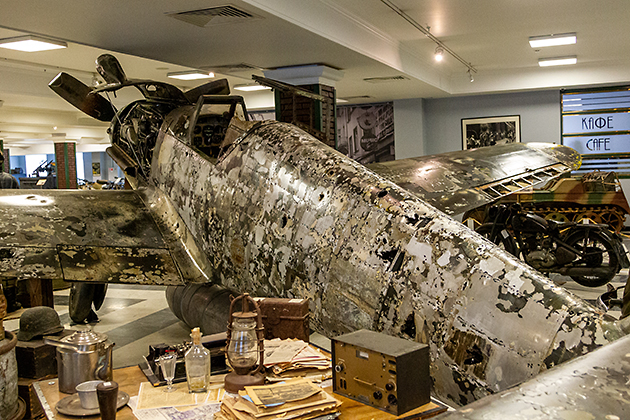
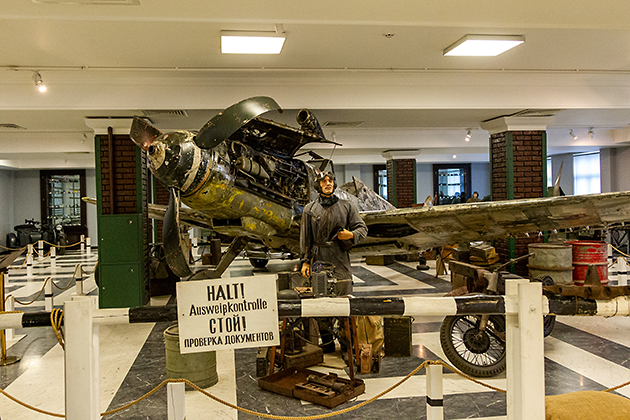
Walking upstairs to the first floor, a huge collection of motorcycles surrounds you. From Harley Davidson to Indian, from test models of Izh motorcycles to special modifications of Ural, from sport to military WWII versions of Soviet and German motorcycles it shows all kinds of motorcycles from the 1920s until today. Suddenly you are stopped by a barrier with writing “HALT” in German. Behind the barrier there is a Messerschmitt Me 109 G-2 “GUSTAV”, one of the most common modifications of this type built and used during WWII. Called ‘Yellow 4’ this aircraft has its own story to tell. Arriving in 2020 at the museum, this GUSTAV served in the famous Jagdgeschwader JG 5 ‘Eismeer’. Suffering damage during a dogfight, Yellow 4 landed on the surface of a frozen lake near the Kola Peninsula. In 2017, after 4 years of investigation, the aircraft was found covered by one meter of mud at a depth of 8.5 meters. After lifting the aircraft, it was investigated and discovered that this plane, while still lying on the ice was used for target practise, as is evident by the fact that its tail section and wings were severely damaged by bullets. During the historical research of this aircraft, the team discovered that it was salvaged by combining three different aircraft, probably due to a shortage of spares in the German Luftwaffe requiring the need to cannibalize damaged airframes. In 1942, this Me 109 had its damaged wings replaced by using wings from another airframe, as well as the wheel damper rods from a Me 109 F “FRIEDRICH“. From the plant, this Me 109 passed to service with serial number W.Nr.14232. Later in 1942 it received parts from serial aircraft W.Nr.10333 and W.Nr.10335 and was used in JG 54 near Leningrad and Novgorod. After JG 54 was transferred to the Focke Wulf Fw 190, Yellow 4 continued to serve with JG 5. Museum crew named it “Frankenstein” and has put it on the second floor making a good full scale diorama of WWII time.
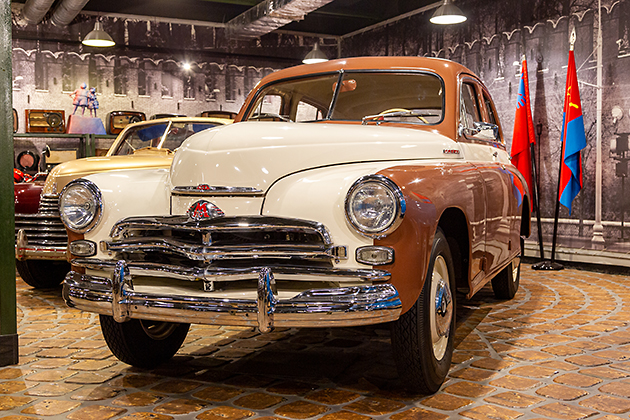
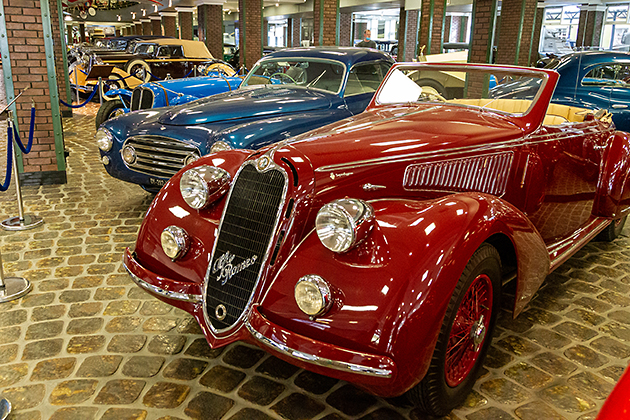
Conclusion: Besides the famous museum of the Russian Air Force at Monino, this place is a must visit for every aviation enthusiast! Situated not far from Moscow, its distinguished atmosphere brings you from epoch to epoch like a time-machine. Not only aircraft, but cars, motorcycles, military vehicles, artillery pieces and steam engines are on display in this very outstanding collection.
Roman Bagrov / CHK 6 Russian Federation
Adress:
Ilynskoe chosse. 4th km, building 9,
Moscow Oblast, 143420
Opening hours:
Monday to Friday: from 10:00 to 19:00 (ticket office until 18:00)
Weekends and holidays: from 10:00 to 20:00 (ticket office until 19:00)
Excursions:
Monday to Friday: 10:00 to 17:00
Weekends and holidays: from 10:00 to 18:00
Contact:
Official Website:
mail: info@tmuseum.ru
phone: +7(495)662-38-18
www.tmuseum.ru

